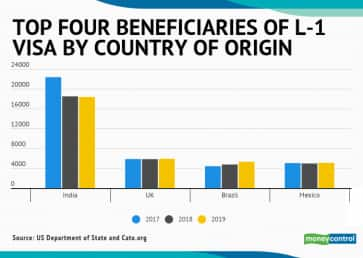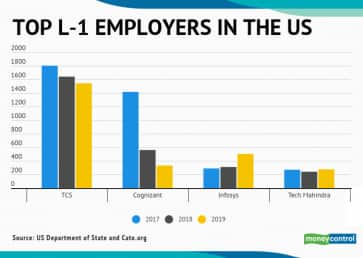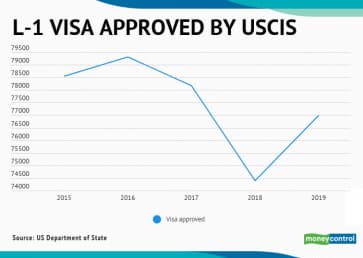



Sharan’s* request for an extension of his L-1 visa (a professional worker visa for intra-company transfer) was recently declined. His pregnant wife, a dependent, was due in June first week making it difficult for them to leave the US on Vande Bharat mission flights, which brought hundreds of stranded Indians back home.
The only option left with Sharan now is to get a B2 visa instead and stay back even it means huge expenses including on insurance. Finding a new job amid COVID-19 is out of the question, particularly since he is an L-1 visa holder.
In another case, an L-1 employee was laid off without prior notice as the firm's business took a hit. He is now contemplating higher education in the US, just so that he can stay there.
This is a challenge most L-1 visa workers are facing in the US. With increasing denials and layoffs, L-1 visa holders are in the line of fire with limited options.
What is L-1 visa?L-1 is a non-immigrant visa for intracompany transfers for candidates who are already working for the company that intends to open or expand operations in the US. It could also be the US parent company that wants one of its employees working in its subsidiary to work in the US.
These visas are reserved for experienced professionals such as managers and executives (L-1A) and those with specialised knowledge in the company’s processes (L-1B).
Indian firms continue to be the largest beneficiaries of L-1 visa accounting for 23 percent of total visas issued followed by the UK. For instance, companies like TCS, Infosys and Tech Mahindra, are one of the largest users of this visa.


According to immigration experts that Moneycontrol spoke to, unlike H-1B, the intra-company transfer visa does not have cap issues. H-1B visa cap is 85,000 in a financial year. This allows companies to file for L-1 for those employees who would be working at their US units.
An immigration attorney pointed out that some companies used L-1 in place of H-1B given the complex and long-drawn process the latter involves.
What are the current hurdles?The rate of denials and request for evidence have increased under the Trump administration leading to L-1 visa rejections. According to a research report by the US-based immigration think tank CATO.org, between 2016 and 2019, rejection share of L-1 increased from 25 percent to 34 percent.

Recent layoffs due to COVID-19 have only added to the troubles. Unlike H-1B visa holders, these employees cannot seek employment in another firm once laid off and have limited options but to return home, especially in the case of Indians. (Canadian and Mexican nationals can move to TN visa that allows them to work in the US).
Take for instance Suraj K*, a techie working in the US on L-1 visa. Suraj had come to India in March for personal reasons and was stuck here till May end before he was able to go back to the US. However, right after he reached, he came to know that his contract was terminated.
Suraj had just three options; changing visa status to B2 or the visitor visa and waiting it out till an opportunity opened up in the company again; pursuing higher studies in the US by taking an F-1 visa and; returning home. However, given the uncertainty, opportunities may not be immediately available and staying back without a job would be expensive. So most people are likely to opt to return back home.
Romish Badani, CEO, Bridge US, an immigration firm, said that given the cost of living is high in the US most people would go home till they find a better opportunity to come back to the US for work.
How will it impact IT firms?The visa rejection would also impact IT firms in delivering projects on time as it would be challenging to find replacements for L-1 visa resources who are specialised in particular fields.
This would, in due course, force companies to look at other operating models apart from the onsite-offshore mix. We are already seeing it happening.
Most IT firms now have close to 60 percent of their workforce in the US as locals. In its FY20 annual report, TCS said with remote working becoming a norm it was looking at a lesser dependency on visa and travel as meetings go virtual.
Discover the latest Business News, Sensex, and Nifty updates. Obtain Personal Finance insights, tax queries, and expert opinions on Moneycontrol or download the Moneycontrol App to stay updated!
Find the best of Al News in one place, specially curated for you every weekend.
Stay on top of the latest tech trends and biggest startup news.